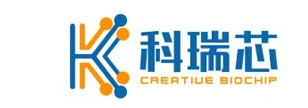电话:025-83681069
QQ:2533640918
E-mail:2533640918@qq.com
网址:www.njkrxsw.com
地址:南京江宁大学城芝兰路18号5栋302室(江宁生命科技小镇)
Binding Of The SARS-CoV-2 Spike Protein To Glycans
Abstract
The pandemic of SARS-CoV-2 has caused a high number of deaths in the world. To combat it, it is necessary to develop a better understanding of how the virus infects host cells. Infection normally starts with the attachment of the virus to cell-surface glycans like heparan sulfate (HS) and sialic acid-containing glycolipids/glycoproteins. In this study, we examined and compared the binding of the subunits and spike (S) proteins of SARS-CoV-2 and SARS-CoV, MERS-CoV to these glycans. Our results revealed that the S proteins and subunits can bind to HS in a sulfation-dependent manner and no binding with sialic acid residues was detected. Overall, this work suggests that HS binding may be a general mechanism for the attachment of these coronaviruses to host cells, and supports the potential importance of HS in infection and in the development of antiviral agents against these viruses.
Graphical abstract
This study systematically investigated the binding of the subunits and spike (S) proteins of SARS-CoV-2 and SARS-CoV, MERS-CoV to heparan sulfate (HS) and sialic acid-containing glycans. Our results revealed that all the tested protein molecules can bind to HS in a sulfation-dependent manner and no binding with sialic acid residues was detected. Overall, this work suggests that HS binding may be a general mechanism for the attachment of these coronaviruses to host cells, and supports the potential importance of HS in infection and in the development of antiviral agents against these viruses.

Keywords
SARS-CoV-2 S proteinHeparan sulfateGlycan microarraySurface plasmon resonanceSulfationSialic acid
1. Introduction
The 2019 novel coronavirus (CoV) is the seventh human coronavirus.[1] This vicious virus is changing the whole world in an unprecedented way.
上一条: 凝集素芯片应用
下一条: 生物糖芯片在人体中的作用原理




 苏公网安备 32011502011536号
苏公网安备 32011502011536号